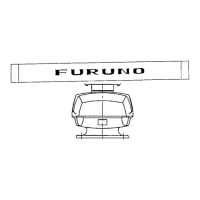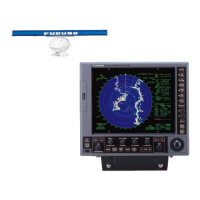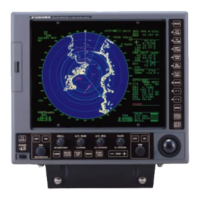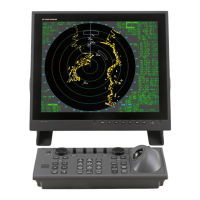
Do you have a question about the Furuno MARK-2 1941 and is the answer not in the manual?
| Power Output | 4 kW |
|---|---|
| Display Size | 10.4" |
| Display Type | LCD |
| Frequency | 9410 MHz ±30 MHz |
| Antenna Rotation Speed | 24 rpm |
Explains DANGER notices for immediate hazardous situations.
Explains WARNING notices for potential hazardous situations.
Explains CAUTION notices for unsafe practices or minor hazards.
Requirements for mounting location, temperature, ventilation, and compass safety.
Guidance on keeping magnets away from equipment to prevent interference.
Overview of the radar's key capabilities and design features.
Detailed technical specifications for the radar scanner unit.
Technical details of the radar transceiver module, including frequency and power.
Technical performance metrics for the radar display unit.
Details on operating conditions, power supply, and consumption.
Comprehensive list of included equipment, installation materials, and spare parts.
Identification and explanation of all controls on the radar's front panel.
Step-by-step instructions for safely powering the radar system.
Explains the radar's transmission modes and on-screen indicators.
Details on economy mode and displaying navigation data during stand-by.
Fundamental operations like range selection and receiver sensitivity adjustment.
Method for reducing sea clutter using the A/C SEA control.
How to choose display orientations like heading up, north up, and true motion.
Adjusting screen brilliance and how to erase heading marks.
Steps for performing automatic or manual tuning of the radar receiver.
Guide to navigating and using the radar's main menu functions.
Techniques for measuring distances and directions to targets.
Strategies to minimize interference from other radar sources or environmental factors.
Using the zoom function to magnify specific parts of the radar display.
How to move the vessel's position on the display to view surrounding areas.
Setting up the guard alarm to detect targets entering or exiting a zone.
Visualizing target history for collision avoidance using echo trails.
Showing navigational information such as position and course on the radar screen.
Enhancing faint echoes from distant targets for better visibility.
Utilizing the watchman feature for periodic radar scans and alerts.
A visual reference for all symbols and indicators on the radar display.
Principles of radar wave travel and the concept of the radar horizon.
How target material and shape influence radar echo strength.
Understanding the radar's ability to differentiate closely spaced targets.
Recognizing and understanding multiple and side-lobe echoes.
Causes and identification of indirect echoes and radar blind/shadow sectors.
Techniques for determining the vessel's position using radar measurements.
Comparison of radar display with nautical charts and radar limitations.
Schedule and steps for maintaining the radar's performance and longevity.
Safe instructions for replacing fuses to protect the radar unit.
A table to help diagnose and resolve common operational problems.
Diagrams illustrating the physical placement of important internal parts for service.
Guidance on siting, handling, mounting, and connecting the scanner unit.
Guidance on mounting and connecting the display unit.
Procedures for connecting external sensors and data sources to the radar.
A checklist to confirm all installation steps were performed correctly.
Configuring antenna height for optimal radar performance.
Adjusting the radar display to accurately reflect the vessel's heading.
Calibrating sweep timing for precise target detection on short ranges.
Checking the magnetron heater voltage to ensure proper operation.
Identifying and documenting blind and shadow sectors caused by obstructions.











